Abstract
Results of investigations on typical specimens were circulated to Australian microbiologists, who were asked to draft reports on the basis of the data provided. Many laboratories were found simply to report the results of their activities without explanations. This was true whether the finding was that of a Gram-negative rod in a postoperative sputum or an anaerobic diphtheroid in a blood culture. There was diversity of views as to what constituted probable contamination in a urine specimen. Often no clearcut verdict was given, nor did the report indicate when no conclusion was possible. Remedial measures are discussed.
Full text
PDF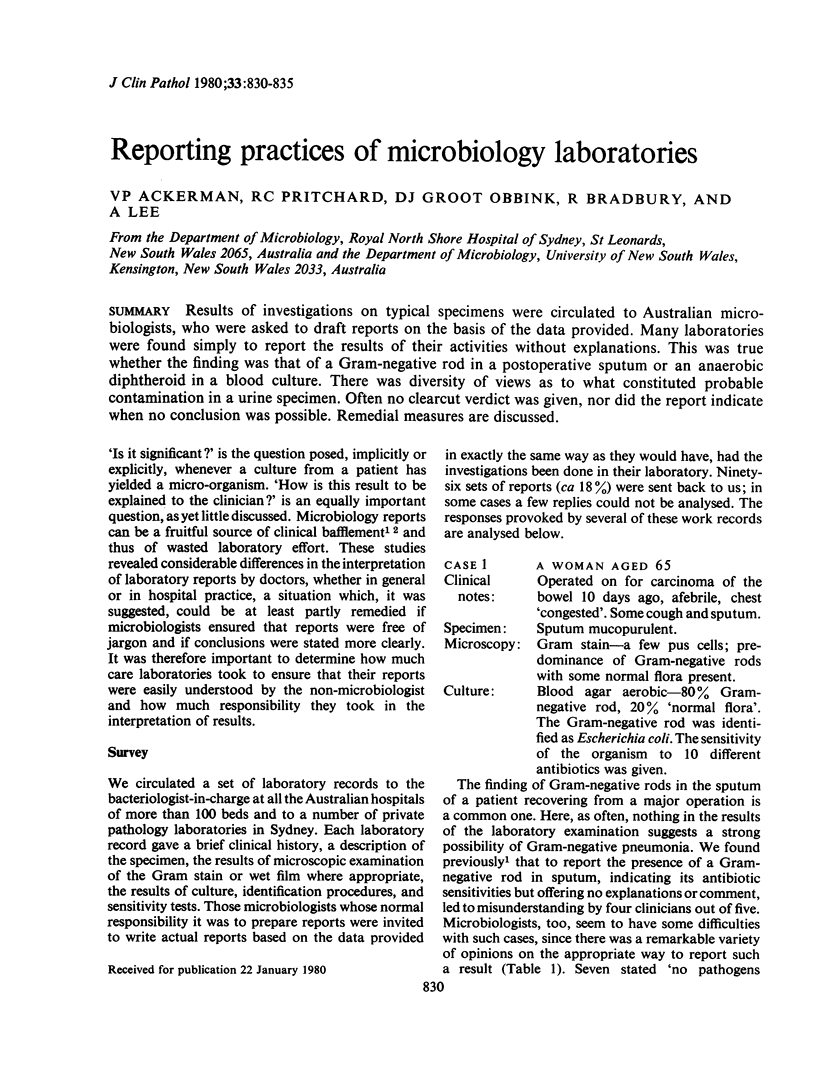
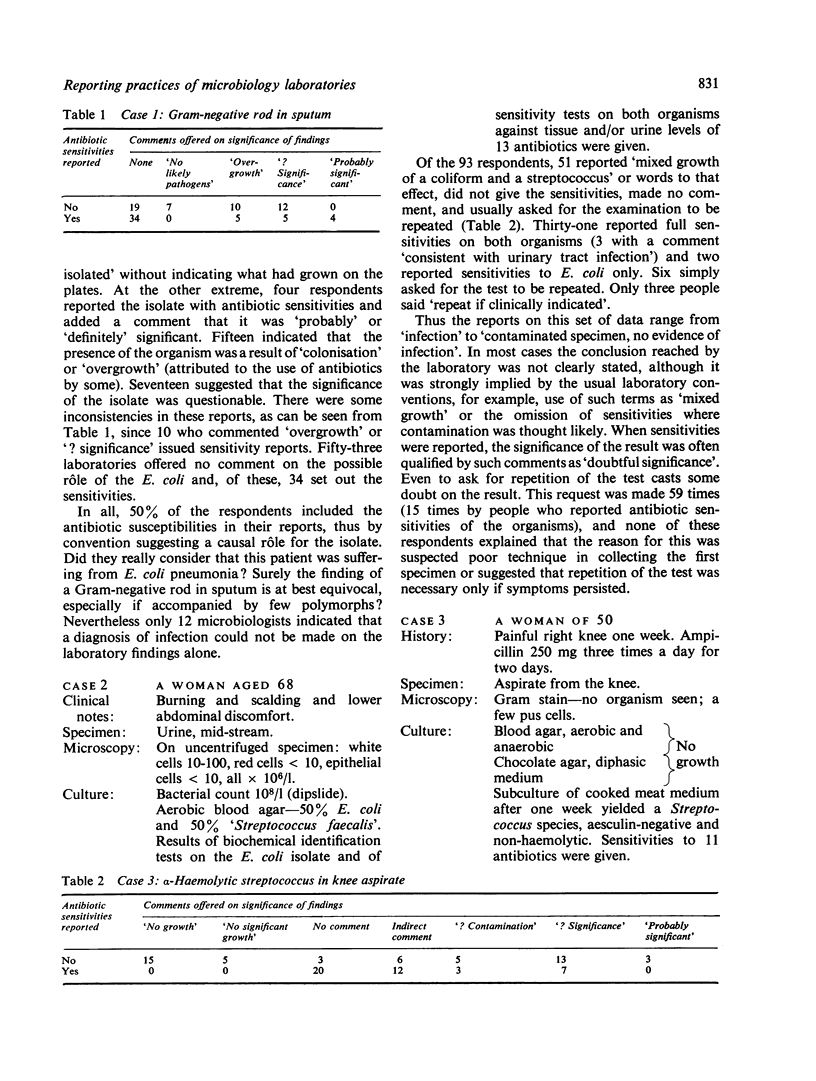
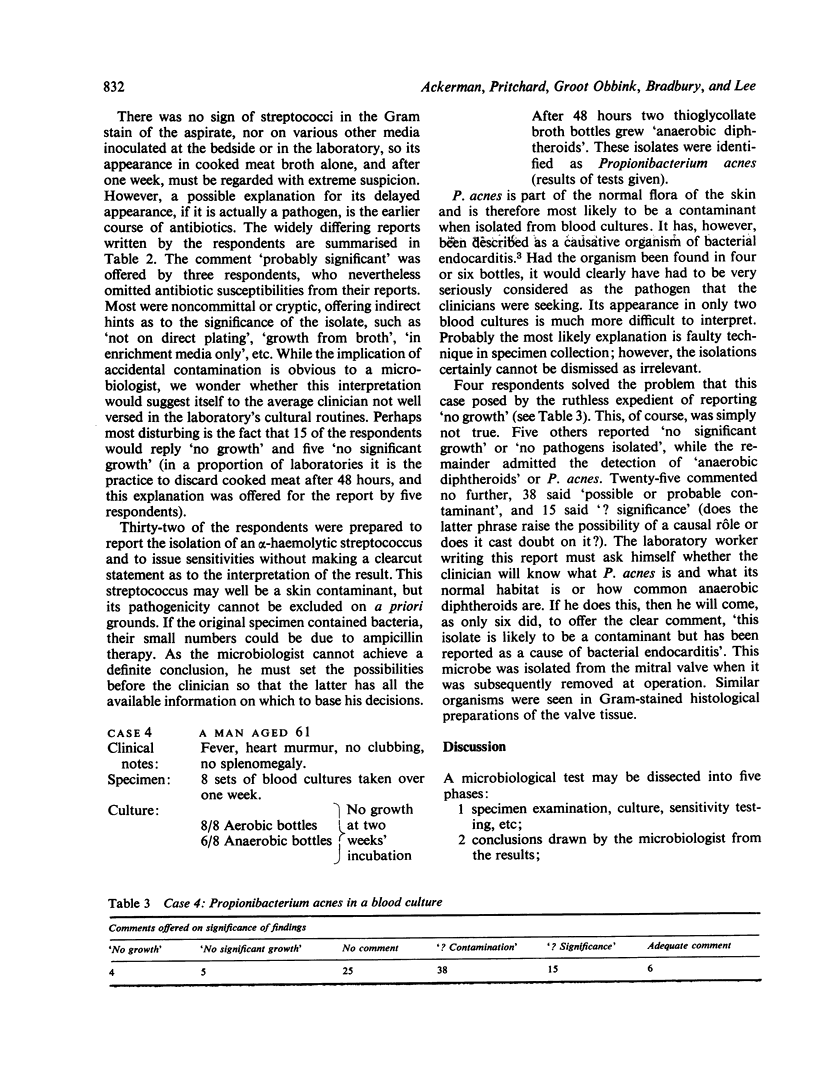
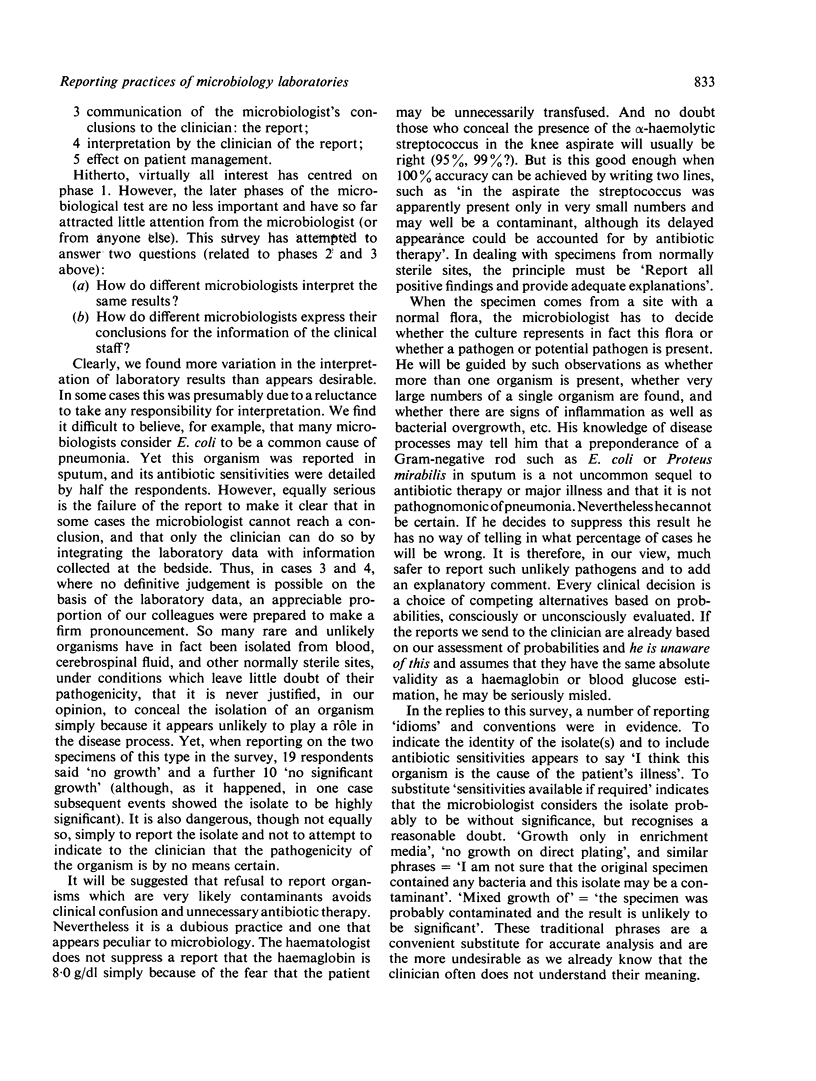
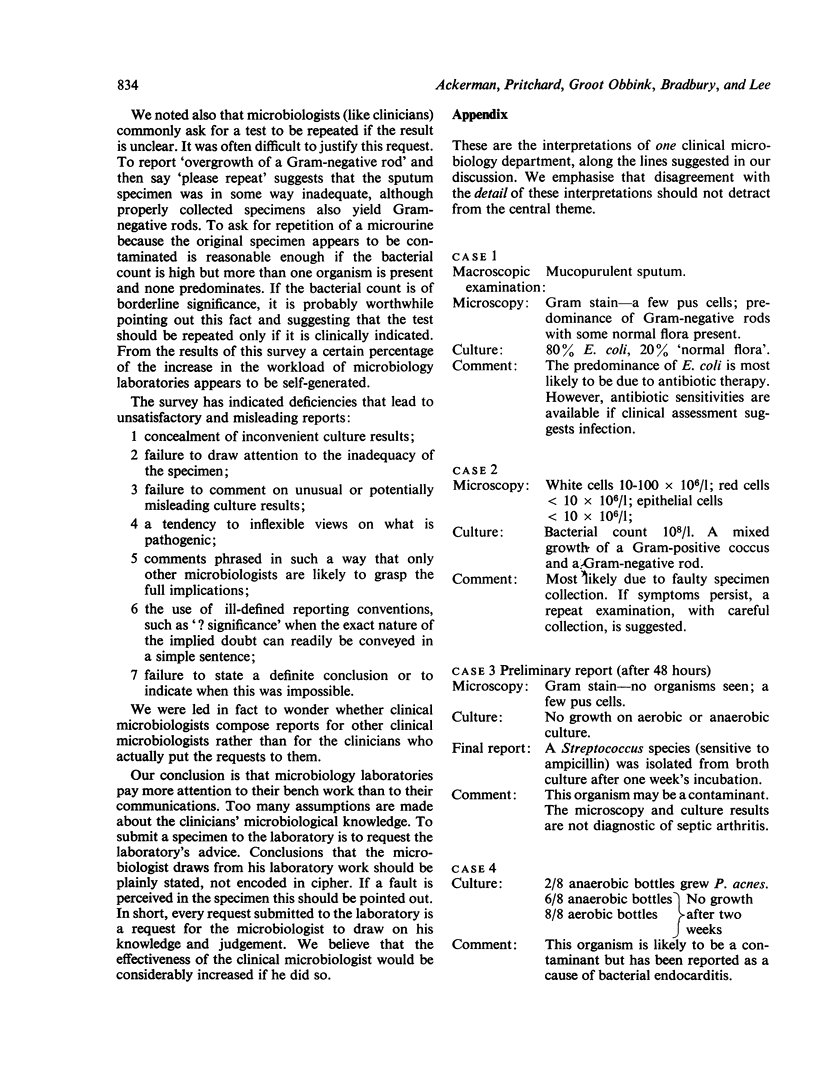
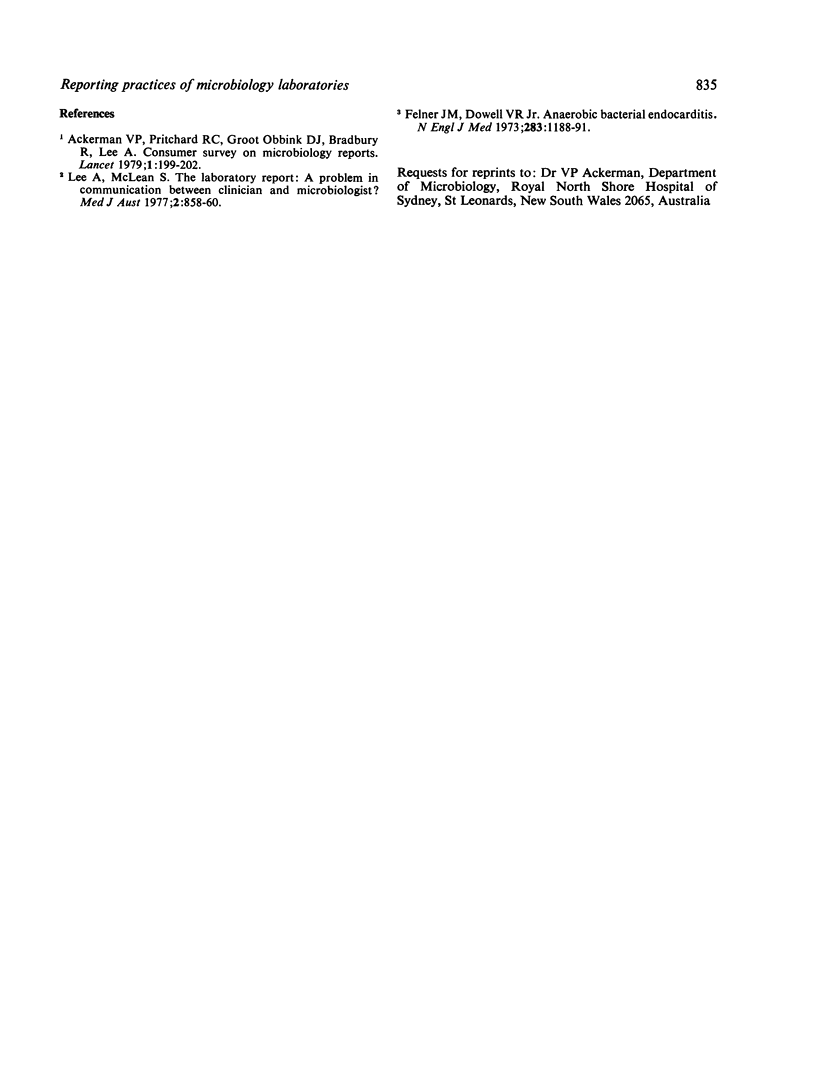
Selected References
These references are in PubMed. This may not be the complete list of references from this article.
- Ackerman V. P., Pritchard R. C., Obbink D. J., Bradbury R., Lee A. Consumer survey on microbiology reports. Lancet. 1979 Jan 27;1(8109):199–202. doi: 10.1016/s0140-6736(79)90593-2. [DOI] [PubMed] [Google Scholar]
- Felner J. M., Dowell V. R., Jr Anaerobic bacterial endocarditis. N Engl J Med. 1970 Nov 26;283(22):1188–1192. doi: 10.1056/NEJM197011262832203. [DOI] [PubMed] [Google Scholar]
- Lee A., McLean S. The laboratory report: a problem in communication between clinician and microbiologist? Med J Aust. 1977 Dec 24;2(26-27):858–860. doi: 10.5694/j.1326-5377.1977.tb107716.x. [DOI] [PubMed] [Google Scholar]


